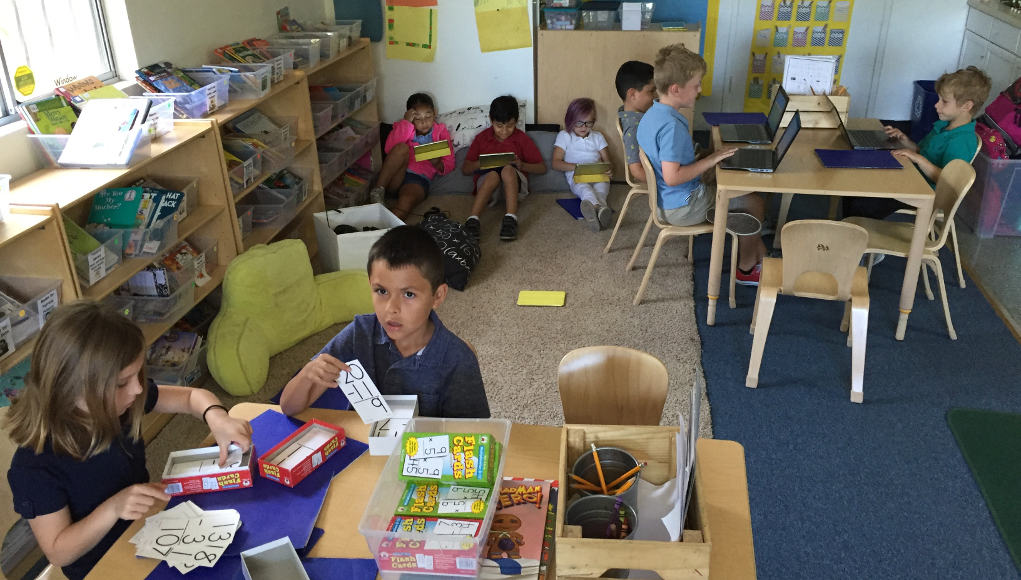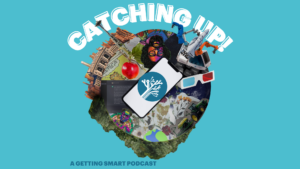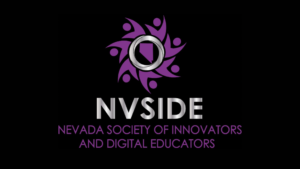5 Ways to Build Collaborative Learning Skills In and Out of the Classroom

Developing skills for collaboration is a critical component for our students for their future. It is so important that educators provide opportunities for students to work together in our classrooms so that they can develop the necessary skills for working on a team which will also enable students to build social-emotional learning (SEL) skills. As we think about the importance of social-emotional learning and its role not only in education but in the future, this is why we must be intentional about finding ways to engage our students more by learning from one another in their classroom and beyond.
There is so much potential for having students work in teams or in small groups in the classroom. Technology can be an important component of these collaborations by creating access to more resources. There are many great opportunities for students to use digital tools available that help to create extra time in the day and offer various ways for students to collaborate beyond the time and space of the classroom, by fostering connections with other students in classrooms around the world.
When and Where to Collaborate
I think that the most critical piece of this is realizing that learning is no longer confined to the instruction that happens in the classroom during class. Unlike years ago when I was a student, our learning took place in the classroom and then we took time at home whether in the evening or weekends to complete homework assignments and projects. But for having opportunities for collaboration, it was far more difficult to work with partners and find a common time to meet beyond the school day. Meeting required physically going to a place to work together and have discussions. With access to new digital tools which bring innovative and more interesting ways to collaborate, these constraints on how, when, and where learning can occur exist minimally today. The biggest factor is whether or not our students and schools have the right access to the resources that are needed.
Just as students need opportunities to collaborate, as educators, we also need to find ways to work with colleagues and members of our Professional Learning Network (PLN), often beyond the school day. We also need to build our own skills and share our skill-sets and methods with our colleagues and PLN. by actively engaging in this right along with our students. We must model lifelong learning and the importance of asking for and offering help to others. Our goal is to construct a supportive foundation where we can all grow from.
Five ways to collaborate wherever and whenever
Here are five ways to promote collaboration both in the physical classroom setting as well as the virtual learning space. With each of these ideas, teachers can have students working together using different digital tools or teaching strategies. Beyond the content involved, students will build their communication, collaboration, critical thinking, problem-solving skills and develop the SEL skills at the same time.
- Learning stations when used in the classroom open up more possibilities for personalized learning, for social interactions, and the building of relationships between students and between the teacher and students. Using between three and five stations in the classroom, depending on class size and grade level, teachers can have students work together through a series of learning activities. Selecting a mix of digital tools, hands-on learning activities, and teacher-directed instruction creates a good mix of ways for students to engage with the content. For some, giving students the option to collaborate and design their own way of practicing the content can lead to new ideas for the whole class. Encourage students to team teach and take more of a leadership role in the classroom.
- Cross-curricular collaboration: How about working with another curricular area or even grade level? Find a connector between your class and that of a colleague. Create a task where the students in both of your classes must collaborate on the same project while you do the same. Maybe you use project-based learning (PBL) in your class and you want to share that framework with a colleague or it is something that you are hoping to learn from a colleague. Find a common bond between your courses and start collaborating. I connected with an eighth-grade science teacher and our students used Buncee to create their presentation. This past year, my students connected with students in Spain and shared backgrounds, interests and other facts about their lives by leveraging technology tools to exchange information. Working together with colleagues to create these opportunities for students and helping students to engage in more meaningful learning makes a
- Beyond Classroom Discussions: Have you had a great discussion going in class just to have it interrupted by the bell? Or have you tried to encourage students to share their ideas but have not been successful? How about getting students to share ideas on important topics, by using some of the digital tools available for curating material or gathering feedback. We have many tools available that when leveraged with purpose, can add great benefits for student learning and student confidence. Some of the options are using things like Padlet to create a wall for discussion where students can post comments and respond to classmates. Try Wakelet to post an idea or a theme and ask students to share and create resources. To get students speaking more, use Flipgrid to create short videos as a prompt for students to discuss. Or try having students create a podcast using tools like Anchor or Synth. Which enable students to create on their own, and using Synth, students can ask and answer questions asynchronously. These are just a few quick digital ways to promote collaboration.
- Collaborative Creations: When it comes to having students do more creating in the classroom, we have a ton of resources and materials to choose from. Giving students the option of using traditional formats versus digital formats is something that I do a lot in my own classroom. I want my students to have choices, however I also want them to build some other skills like online collaboration and designing. There are many tools that are adding features for students to create together. Beyond the collaborative options within Microsoft and Google, students can now work with emerging technologies. Using tools like CoSpaces and 3DBear, students can work together to create augmented and virtual reality spaces for digital storytelling. With either of these options, students work together in ways that build collaborative skills while also connecting them with more authentic and meaningful learning experiences.
- Blogging and Website Design: Blogging offers so many benefits in addition to building literacy skills and helping students to share ideas in a more authentic way. It also offers an effective way to build relationships between students as they exchange ideas, offer peer feedback and engage in more conversations in the classroom and online. Teachers can learn more about students and their interests, and use these ideas to create additional opportunities for collaboration within the classroom and with global peers. Tools such as Kidblog or Edublogs are good options. Creating a group project can be done using many different presentation formats, but one which helps students to build skills transferable for the future is in designing a website. Students in my school created websites for History Day and had a great artifact of learning to share and developed skills which will benefit them in the future.
Beyond these ideas, reach out into your school community and find local organizations that are open to working with students. It would benefit our students by connecting with real-world learning experiences and building skills beyond those covered in the curriculum. It benefits the school community by learning about what education looks like for students today. Providing options through place-based and experiential learning opportunities will open new possibilities for student interests and future career explorations.
For more, see:
- Collaboration: Bringing Students Together to Promote Learning
- Defining (and Driving) Collaboration
- A Celebration of Cross-curricular Creativity
Stay in-the-know with innovations in learning by signing up for the weekly Smart Update.







0 Comments
Leave a Comment
Your email address will not be published. All fields are required.